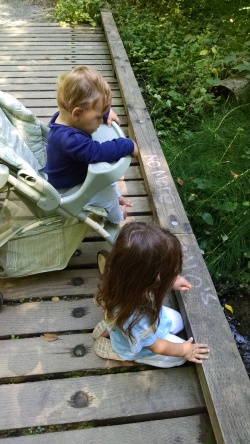 Especially with the increased output of Hollywood superhero movies these days, it can be easy to think of them as nothing more than shallow entertainment. However, the powerful storytelling and archetype of the superhero is something that appeals to many of us on a deeper level; it teaches us about standing up for those in need. My husband and I used this archetype recently with our own kids.
Especially with the increased output of Hollywood superhero movies these days, it can be easy to think of them as nothing more than shallow entertainment. However, the powerful storytelling and archetype of the superhero is something that appeals to many of us on a deeper level; it teaches us about standing up for those in need. My husband and I used this archetype recently with our own kids.
My elder son and daughter attend the same preschool, and unfortunately there was an increase in bullying behavior recently. This is developmentally typical for this age, and it also provides a good opportunity for learning how to deal with bullies in the “real world.” Kids have to learn how to respond to mean or bullying behavior, just like they need to learn how to say no when a friend wants to play house or play fight and they don’t (and don’t get me started on how adults need to learn the difference between bullying and roughhousing! That is for a later post). Kids who are not the target of bullying also need to learn how to respond when they see it. Often they will ignore it so as not to become a target themselves, or they will join in. It does not mean they are malicious kids, they are simply trying out behaviors they see.
But we asked our kids to go a step further, and not just ignore but try to help.
When we heard this was going on, we sat down with them and talked with them about why the behavior wasn’t okay, were they targets, were they participating, and did they feel safe. Then my husband told them, “You are both very strong, and I want you to try something; I want you to stand up to anyone you see picking on a kid in your class who may not feel strong, who is getting bullied. I want you to support them, even if they are not your best friend. Can you do that?”
My daughter nodded her head in understanding, but my son, who is only 3, wasn’t exactly sure what Dad meant. My husband tried to explain it again, but started getting more complicated in his wording, and I could see Keir’s eyes start to glaze over in confusion. But I realized my husband was describing something very familiar to our son.
“We want you to be a superhero,” I interjected. My son loves superheroes (and bad guys like Darth Vader, but it’s hard to have one without the other). His eyes lit up. My husband immediately caught on to where I was going.
“That’s right. Superheroes stand up to bad guys and bullies and protect their friends, even people who are not their friends,” he explained. “Even if nobody else is, in fact because nobody else is, they stand up for those who need help. Can you be like a superhero?”
 My son seemed frankly a little shocked by the idea that HE, a little guy, could be a superhero in real life. But he also seemed willing to give it a try.
My son seemed frankly a little shocked by the idea that HE, a little guy, could be a superhero in real life. But he also seemed willing to give it a try.
By reading stories and playing superhero (and bad guys), both my kids understood what it meant to stand up to bullying and supporting and defending your friends without even really “knowing” it . The hero archetype is a valuable one; through reading about it and playing one we learn to be brave for ourselves and others, and that sometimes we fight the battles nobody else wants to.
The next morning, I helped my kids bundle up against the cold morning, saying, “all right, let’s get our superhero outfits on.” As they trundled out the door to school with their dad, I called out, “good luck, little superheroes!” At pick-up that day, I asked the usual questions – what did you work on? Who did you sit with at lunch?
My daughter answered, “I asked [kid often being bullied] to play with me, and [kid who often bullies] to sit with me at lunch.”
I think she’s embodied being a compassionate superhero better than I have. But then, she and her brother play/practice being superheroes a lot.









